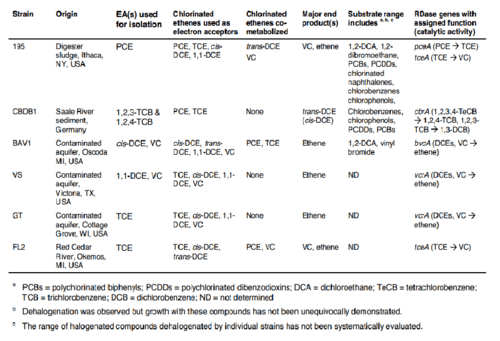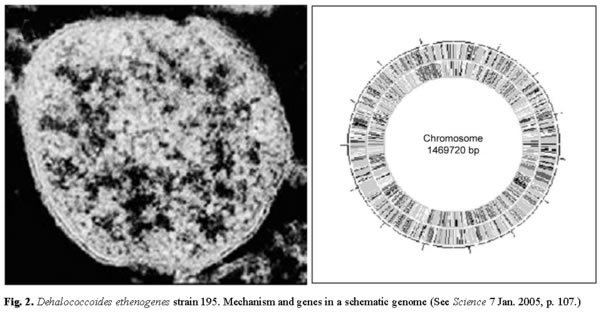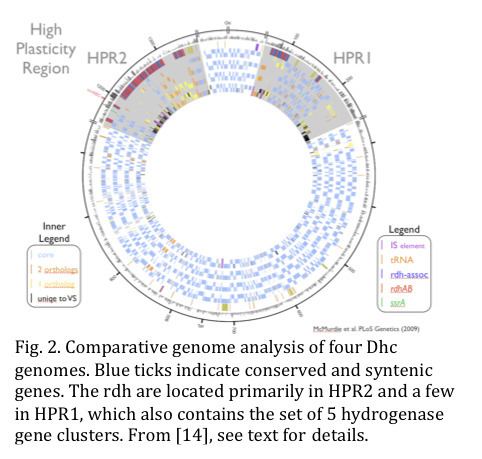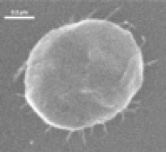Phylum Chloroflexi | Higher classification Dehalococcoidetes Rank Genus | |
 | ||
Similar Bacteria, Dehalobacter, Chloroflexi, Desulfitobacterium, Dehalogenimonas | ||
Dehalococcoides is a genus of bacteria within class Dehalococcoidetes that obtain energy via the oxidation of hydrogen gas and subsequent reductive dehalogenation of halogenated organic compounds in a mode of anaerobic respiration called dehalorespiration.
Contents

Reductive dehalogenation

The first member of the "Dehalococcoides" (DHC) group, "Dehalococcoides ethenogenes", now D. mccartyi strain 195 (DET) was described in 1997, and is noted for its potential use in the bioremediation of tetrachloroethene (PCE) and trichloroethene (TCE) contaminated ground water sites. Additional DHC members were later described. These include CBDB1, BAV1, VS, and GT. High DHC population numbers and electron substrate concentrations are necessary for effective bioremediation of dense non-aqueous phase liquids (DNAPL) contamination sites. Addition of either fermentable substrate to create hydrogen gas in situ, or inoculation of the site with mixed cultures containing Dehalococcoides are required for effective remediation.

Other dechlorinating microbes are also responsible for the PCE → TCE → 1,2-Dichloroethene (1,2-DCE) sequence of ethene dehalogenation, but these organisms often fail to continue the degradation sequence from 1,2-DCE to vinyl chloride (VC), and finally, ethene (1,2-DCE → VC → ethene), which is environmentally benign. Dehalococcoides effectively converts 1,2-DCE to VC, and its presence in groundwater may be necessary for proper bioremediation of contaminated sites.
Mixed Dehalococcoides species can also bioremediate environmental sites contaminated with polychlorinated biphenyls (PCBs).
Genome structure
Several strains of Dehalococcoides sp. has been sequenced.


